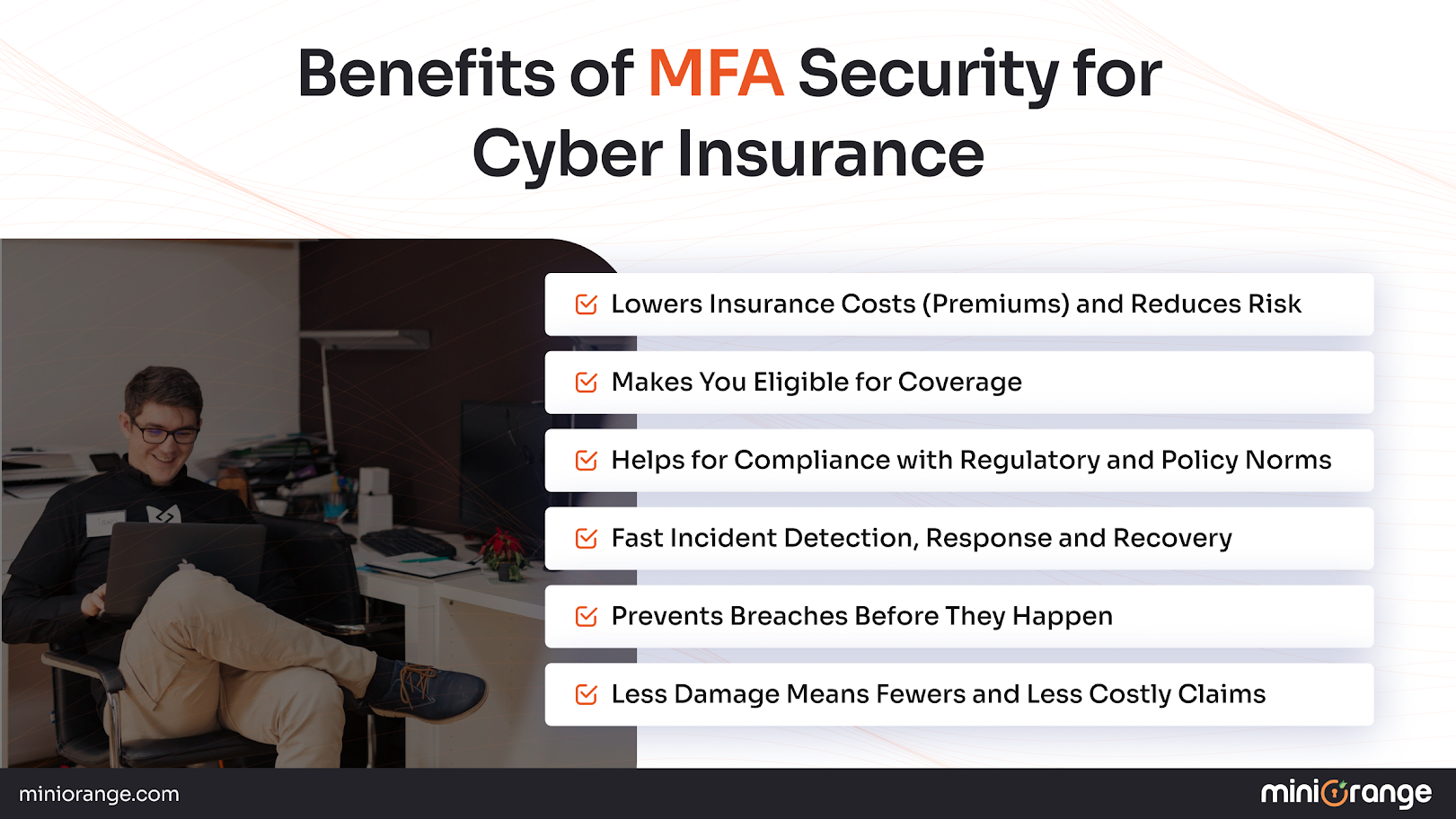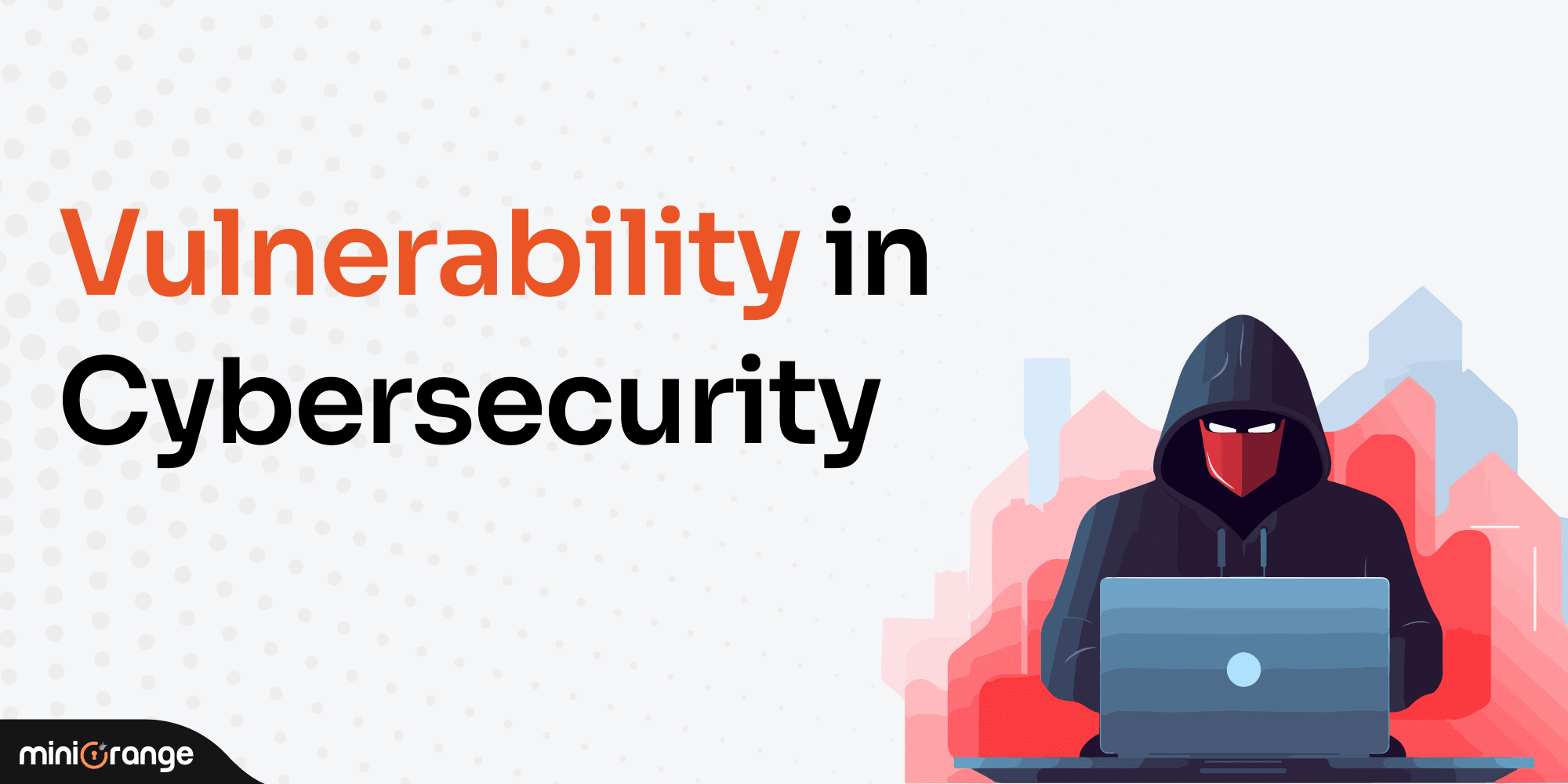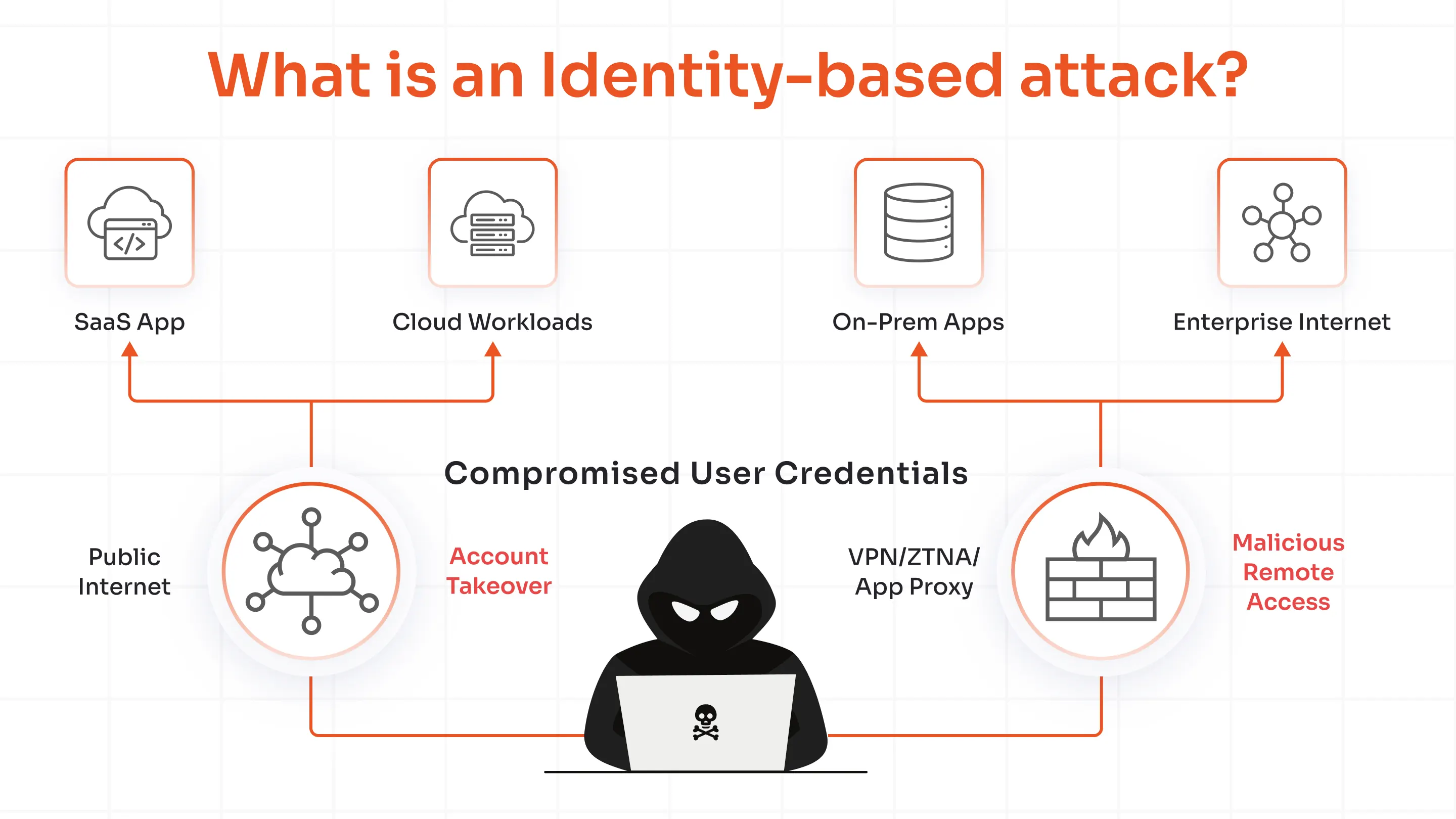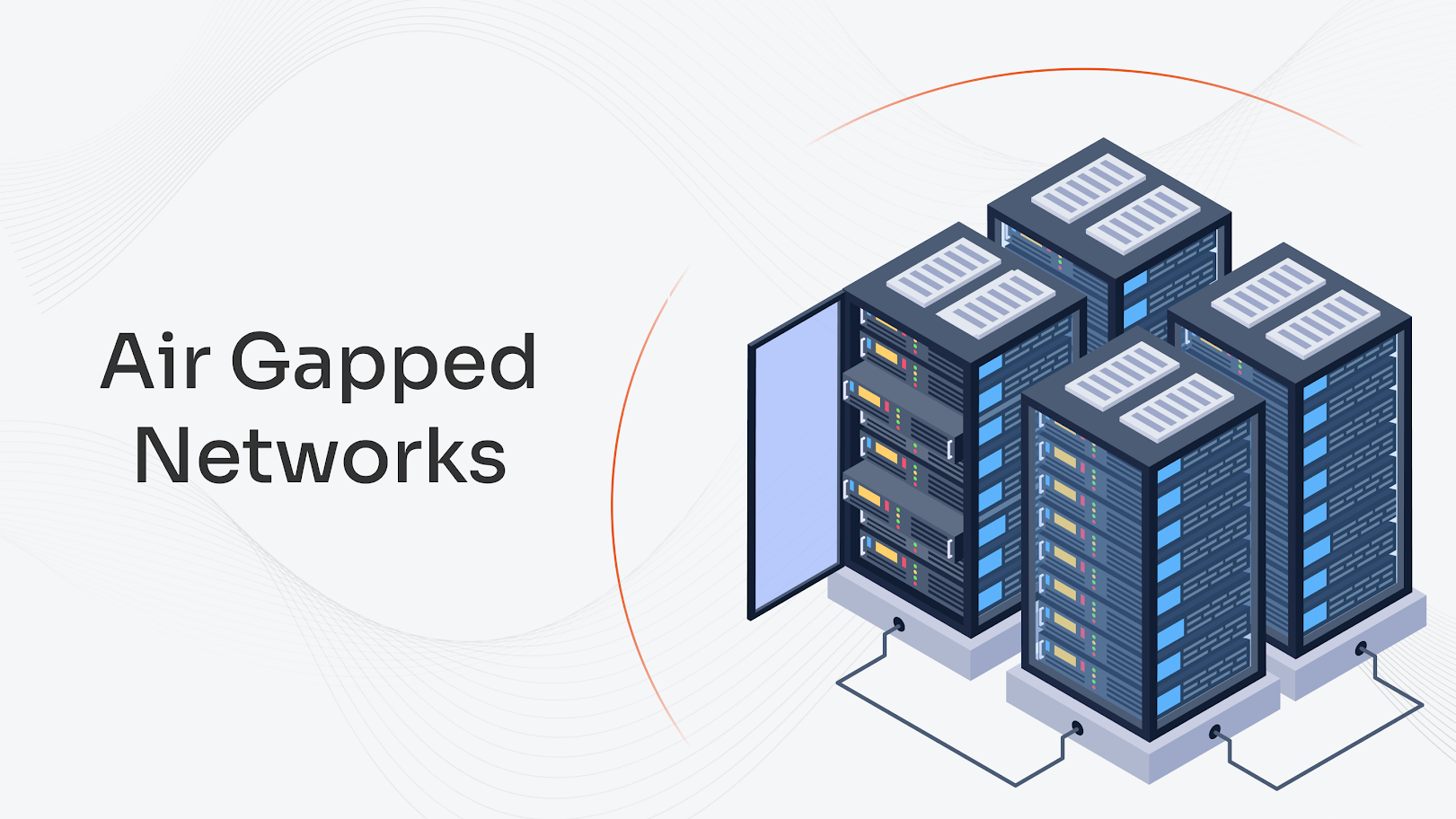Multi-factor authentication, or MFA, can block 99.9% of account compromise attacks, as per a study done by Microsoft, and hence, it is one of the MFA requirements for cyber insurance. It is the factor that makes or breaks your insurance claim, and it must be operative at all times. Preventing has always been better than acting upon damage already done. The severe consequences of not enabling MFA for your organization’s login systems are known to the insurers, and they help you cover any further financial losses occurring.
In this article we cover the importance of MFA for cyber insurance and dive deep into how miniOrange MFA can help for your cyber insurance benefits.
What is Cyber Insurance?
Cyber insurance is a type of insurance that helps businesses deal with the financial impact of cyberattacks such as ransomware, phishing, data theft, or service disruptions. In the past, it was mostly sold as a backup plan to cover costs after an attack. Today, it has become an important way to actively manage cyber risks and prepare before anything goes wrong.
Because of the rising number of cyber claims, insurers are now much stricter when evaluating risk. One of the biggest changes is the role of Multi-Factor Authentication (MFA). What was once just a recommended best practice is now a mandatory requirement for coverage and renewals. If MFA is not in place, a claim may even be rejected, no matter how much the policyholder has paid. This is why MFA is now seen as an essential part of both cyber insurance and overall business protection.
Why is MFA Now Mandatory?
Weak or stolen passwords remain the easiest way attackers break in. Studies show MFA can block over 99% of automated account takeovers, making it one of the most effective defenses. Learn more about why MFA is important for strengthening your organization’s security.
That’s why insurers now expect MFA for critical systems like email, VPNs, SaaS apps, and privileged accounts. Without it, organizations face higher premiums, compliance risks, and greater exposure to cyberattacks.
In short, MFA is no longer optional. It is the digital equivalent of locking your doors, protecting your business while also meeting insurer and regulatory requirements.
Why MFA Is Critical for Cyber Insurance Policies
Cyber insurers have shifted from recommending Multi-Factor Authentication (MFA) to requiring it as a baseline standard. The reason is simple: most breaches involve stolen or weak credentials, often through phishing, brute force, or data leaks on the dark web.
MFA adds a vital second step to every login and is proven to block over 99% of automated account takeover attempts. For insurers, this single control dramatically reduces the likelihood of a claim. It is now treated as essential as locking the front door of a property before applying for insurance. Renewal forms now commonly ask: Do you enforce MFA on all admin, remote access, and email accounts? A “no” answer can mean higher premiums or even denial of coverage.
For organizations, MFA is not only about satisfying insurers. It safeguards customer trust, reduces downtime, and strengthens overall security. The best approach is to begin with privileged and high-risk accounts and expand across the business. Documenting your MFA policies and providing evidence of enforcement also helps speed up underwriting and claims processing.
In short, MFA protects twice. It shields your organization from attacks, and it ensures your cyber insurance will work as intended if an incident does occur.
Discover Why MFA is Essential for Banks and Financial Institutions
Benefits of MFA Security for Cyber Insurance

Multi-Factor Authentication (MFA) doesn’t just boost your security. It strengthens your cyber insurance position in ways that directly impact costs, compliance, and risk.
Lowers Insurance Costs (Premiums) and Reduces Risk
Insurers reward organizations that can show they have security controls in place, and MFA is one of the highest-impact controls you can employ. By demonstrating you have made a substantial reduction in your organization's potential for credential-based breaches, you'll be able to enjoy lower premiums, improve your cyber risk rating, and impact your bottom line directly.
Makes You Eligible for Coverage
Many insurance companies now require MFA before they will issue or renew cyber policies. If you employ MFA for all user levels, especially for privileged and remote access, it indicates that you satisfy the basic underwriting standards. This not only makes sure you qualify for higher coverage limits and better terms, but it also stops policy exclusions that have to do with credential-based assaults.
Helps for Compliance with Regulatory and Policy Norms
Numerous data protection laws, industry frameworks, and (increasingly) insurance policies require MFA for privileged access and remote entry. Enforcing MFA provides a clear auditable record to rely on for underwriting reviews and compliance audits to support your compliance effort.
Prevents Breaches Before They Happen
The vast majority of cyber incidents start with stolen or guessed passwords, and MFA would stop them before any escalation. By implementing a second form of verification, you can decrease the probability of a breach and protect the uninterrupted operation of your organization, as well as have a safety net of insurance to help recover from a loss event.
Fast Incident Detection, Response and Recovery
MFA systems make thorough logs of authentication attempts and send out notifications in real time for unusual login attempts, like failed codes, out-of-band verifications, or logins from strange places. When you connect these signals to your SIEM or incident response platform, they enable your security team to find and stop threats in only a few minutes. Faster detection and automatic containment lower dwell time, limit financial exposure, and speed up the claims procedure if something does happen.
Less Damage Means Fewer Risks and Less Costly Claims
By combining excellent MFA practices with your insurance, you are not only protecting your firm from risks today but also the financial safety net that keeps it strong.
By pairing strong MFA practices with your policy, you’re not only defending against today’s threats but also protecting the financial safety net that keeps your business resilient.
MFA Requirements for Cyber Insurance Providers
Cyber insurers went from considering Multi-Factor Authentication (MFA) an optional measure to making MFA a hard requirement to help mitigate claim risks and increase your eligibility.
- Privileged Accounts - There must be MFA on all varieties of accounts that have administrative, domain, and system-level access to prevent serious attacks against credentials.
- Remote Access Points - MFA must be applied to VPN, RDP and other remote network entry points to help prevent unauthorized login attempts from outside the corporate perimeter.
- Cloud Services and Email - MFA must be required on services including Microsoft 365, Google Workspace and any other cloud software that holds sensitive data or communications.
- Third-Party Vendor Access- MFA must sometimes be in place for contractors, Managed Service Providers (MSPs), and other partners that may have access to any network or data to mitigate supply chain risk.
- Full Enforcement Evidence - Cyber insurers may ask for screenshots of the settings from the policy settings or audit logs to confirm MFA was enforced across all relevant accounts.
- Acceptable MFA Authentication methods to use - Be specific about what secure methods technology and people can use, including authenticator apps, hardware tokens, and biometrics, and the insurer can deny a policy when using choices that were considered weak, such as SMS.
- No MFA enforcement Consequences - An insurer can choose to have a higher premium, exclude certain types of claims in relation to coverage, or deny coverage related to any credential being compromised with no MFA policy enforced. Meeting MFA normalizations not only meets your provider's conditions, but it ultimately enhances your protections, protects you against higher premium costs, and enables your policy to pay out in times you need it most.
Choosing the Right MFA Method for Cyber Insurance
Cyber insurers are expecting more MFA that is secure and demonstrably enforced. Although some insurers may still accept SMS codes likely for limited use cases like customer portal access, MFA is increasingly developing toward phishing-resistant methods, which both reduce account takeover risk and meet underwriting requirements.
MFA methods to consider:
- Hardware Security Keys (FIDO2, YubiKey) - Provides the highest protection against phishing and is often viewed by insurers most positively.
- Authenticator Apps (Microsoft Authenticator, Google Authenticator) - Provides good security while still being easy to use.
- Biometric authentication - Requires little to no effort from users on supported workflows. Still refer to using another factor for multi‑factor authentication.
- SMS or Email OTPs - Everybody understands SMS and email OTPs. However, this method is discouraged by lots of providers who do not allow SMS codes and email codes since it can be intercepted, or if using SMS, SIM swap can be exploited.
Choose your method that balances security strength, user adoption, and compliance with your policy. Remember to roll out high‑risk accounts, document your rollout (good for audit), and ensure that it's aligned with your insurers' requirements and security best practices. These steps will both increase coverage eligibility and limit exposure to breaches.
Cyber Insurance MFA Checklist (Practical Guide)
Use this checklist to ensure your MFA program meets common cyber insurance stipulations - this will help you demonstrate compliance and lower underwriting risks.
Policy and Scope
- MFA is required for all remote network access (e.g., VPN MFA, RDP, cloud apps).
- Applied to all privileged accounts (admins, super users, IT), and
- Applied to all users with access to sensitive or regulated data.
Method of Authentication
At least two of the following:
- Something you know (password or PIN),
- Something you have (authenticator app or hardware token, smart card), and
- Something you are (fingerprint, face ID)
Try to avoid SMS codes as your only second factor - this is usually seen as a red flag by insurers. Newer and stronger methods like context-based authentication based on the user's behavior are seen as more authentic.
Standards for Implementation
- MFA with SSO so that you can consistently enforce,
- Adaptive MFA, which asks for MFA based on risk (e.g. device, geo-location, time anomalies), and
- Central repository for logging MFA events so that you can show you are audit-ready.
Usability and Coverage
- Implementation covers on-premises and cloud applications.
- Applied to both desktop and mobile access, and
- A relevant process for fallback account recovery and guidelines so that users do not work around MFA controls.
Evidence and Documentation
- Have an updated written MFA policy with whatever the items are that your insurer requested
- Document and retain screenshots or configuration exports that are indicative of your MFA enforcement and
- Document your process for handling exceptions for granting pre-approved non-MFA accounts.
"Pro Tip: Use the checklist in concert with a miniOrange deployment diagram that identifies your applications that have MFA enabled; the combination will help produce quicker and more efficient insurer audits identifying your proactive security posture."
How miniOrange Helps Businesses Meet MFA Insurance Requirements
Meeting MFA requirements to be eligible for cyber insurance is no longer optional; it is a key component in eligibility and premium negotiations. miniOrange provides organizations with MFA solutions that align with insurers' expectations to allow businesses to provide evidence of compliance with their policy requirements. This reduces underwriting risk exposure, presents evidence of credibility for claims and provides businesses with more leverage when renewing policies or negotiating.
miniOrange platform provides a variety of MFA methods, such as adaptive authentication, biometrics, and SSO, at a tailored pricing based on your company’s requirements. It allows organizations to easily deploy security for different users or devices. miniOrange aims to minimize operational friction for its clients, allowing organizations to provide security updates without impacting operational efficiency. This approach provides organizations with a layer of protection for sensitive data while also maintaining compliance with evolving criteria from insurers with minimal operational disruption.
By implementing miniOrange MFA software, organizations are provided a robust security model, along with demonstrable compliance benefits. Organizations will be capable of meeting current cyber insurance requirements and rapidly adapting to future changes to policy language while supporting long-term resilience and risk mitigation. For insurers, this reflects a proactive security culture - which builds trust, minimizes claims exposure, and can even translate to financial benefits for the organization insuring their risk. Contact miniOrange to learn how we can help you comply with cyber insurance MFA requirements.
Future of Cyber Insurance MFA with miniOrange
The future of cyber insurance is clear: Multi-Factor Authentication is no longer optional, it is essential. Insurers now expect organizations to prove they have strong authentication in place before granting or renewing coverage.
This is where miniOrange makes a difference. Our MFA solutions are simple for employees, flexible for IT teams, and strong enough to meet the toughest insurer requirements. By combining ease of use with advanced features like biometrics and adaptive checks, we help organizations strike the right balance between security and productivity.
With miniOrange, MFA becomes more than a compliance checkbox. It strengthens your defenses, reduces risk, and even helps you secure better insurance coverage with lower premiums. In other words, it protects your business twice: by preventing breaches and by ensuring your insurance coverage is there when you need it.
miniOrange makes it easier to manage your factor authentication for cyber insurance, taking care of all the complexity so you can focus on what matters. Opt for an IAM free trial today.
FAQs
Can you get cyber insurance without MFA?
Most insurance carriers today require multi-factor authentication (MFA) to issue or renew cyber insurance. If you don't have an MFA, coverage may be denied or partially denied, and the premium is generally much higher due to the level of risk involved.
What MFA methods satisfy insurance providers?
Insurers usually accept the following MFA methods, such as authenticator applications (Google Authenticator, Microsoft Authenticator, and others), biometrics (fingerprint or facial), hardware tokens (USB or smart card), and push notifications received on a registered, secure device.
Does MFA reduce cyber insurance costs?
Yes, using MFA lowers the risk of a cyber incident and fewer claims, which helps with the insurance premiums and gives opportunities with the terms of the policy.
Is SMS-based MFA enough for cyber insurance?
SMS MFA may satisfy some insurers; however, many may prefer stronger and phishing-resistant MFA methods (i.e., authenticator applications, hardware tokens, biometrics) because of the inherent weaknesses of SMS.




Leave a Comment